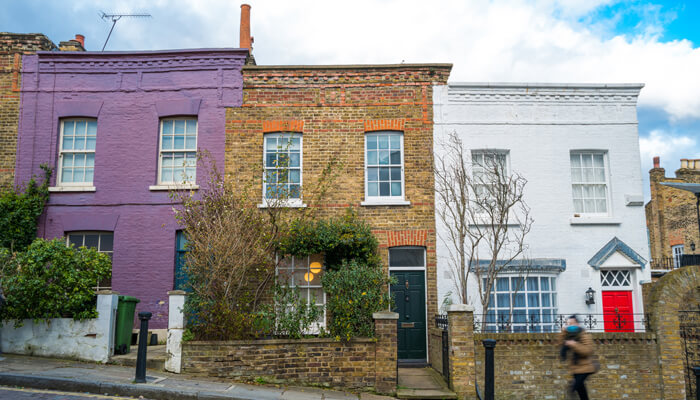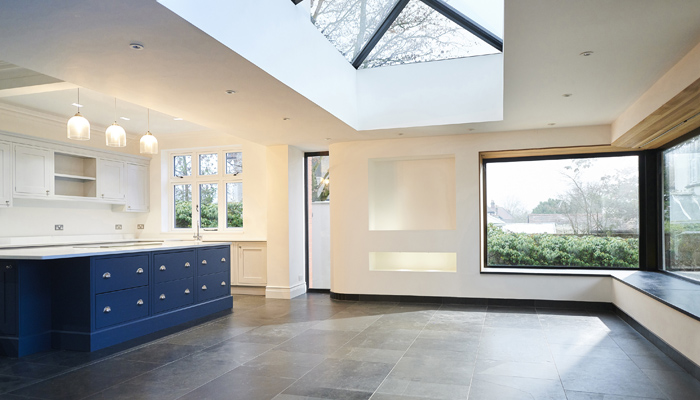Fire safety in residential buildings
The core principles of fire safety management in residential buildings are the same as in any building – but with key differences.
One of them is that most residential buildings are designed so that residents should “stay put” should there be a fire in the property. But this principle relies on effectively dividing the building into 'compartments' - ensuring that there is a divide between all the residential units and the common parts.
Since the Grenfell Tower tragedy in 2017, there has been a review of building regulations. New legislation has also been introduced[1], aimed at improving the safety of high-rise residential buildings. This legislation would follow the development of the buildings from their design stages and throughout their lifecycle.
Recommendations for residential building owners, landlords and “right to manage” companies
Any residential building owner, landlord and/or “right to manage” company should determine whether their building is:
- A “higher-risk building (HRB)” - a building of more than 18m tall, or more than seven storeys.
- A “relevant building” - a building of more than 11m tall, or more than five storeys.
- Neither of these.
Then, they should identify the responsible person(s) - this is the individual or organisation with control of the premises who is legally obligated to ensure fire safety.
In cases where the building is an HRB, the accountable person(s) should also be identified - this is the individual or organisation that owns or is responsible for repairing any of the common parts of the building.
Residential building responsible persons and/or accountable persons should:
- Communicate, coordinate and cooperate with each other.
- Maintain a detailed level knowledge of the building areas they are responsible for.
- Maintain a good level of knowledge of the whole building.
- Seek competent advice as and if required.
- Provide fire safety information to residents.
- Liaise with the Fire and Rescue Authority (FRA) and/or the Building Safety Regulator (BSR) when issues arise or when in doubt.
The responsible person must know their duties under the Regulatory Reform (Fire Safety) Order 2005, the Fire Safety Act, and the Fire Safety (England) Regulations, and fulfil them to the best of their ability.
The accountable person must know their duties under the Building Safety Act, and fulfil them as best they can.
The accountable person must:
- Register the building with the Building Safety Regulator (BSR).
- Apply for a Building Assessment Certificate.
- Assess building safety risks.
- Prepare a Safety Case Report for the building, which must be provided to the BSR.
- Keep the prescribed information on a building and ensure it is up to date.
- Review the risk assessments on which their arrangements for managing building safety risks and Safety Case Report are based.
- Display the prescribed information.
- Operate a complaints procedure.
The fire risk assessment must also be recorded, and should record all findings, not just the significant ones. This should be done by a competent person and shared where there are several (such as for different parts of a building). It must also contain the fire risk assessor’s name and organisation.
[1] What are my building owner’s legal obligations? - GOV.UK
Case studies in fire safety
In May 2023, Camden Council was fined £500,000 (with costs of £41,000) after failure to address serious fire defects in one of its properties for four years led to the “unnecessary” and “terrifying” death of a 35-year-old woman. A fire risk assessment had identified the defects four years before the incident - and another six months before it - but no action was taken.
In October 2018, two private property companies who were responsible for the flats in a former NatWest building on Sydenham Road, were fined a combined total of £32,000 by Croydon Council. This fine was for failing to follow Croydon Council’s landlord licensing scheme. The serious fire issues, such as a locked fire escape and defective fire doors, meant there was “serious harm or potential harm to the tenants in failure to license”.
There were 25,935 fires in dwellings in England in 2023, 27% of which occurred in low to high rise residential buildings. These caused 195 fatalities, and represent 42% of all fires and 72% of all fire-related fatalities.
What has changed?
In England and Wales, the definition of “common parts” of a residential building now explicitly includes the flat doors to said common parts, and the external fabric of the building, including balconies. All risk assessments must therefore consider these elements.
In England, the following new requirements have been introduced for buildings with at least two residential units and common parts, depending on their height:
- All buildings should provide fire safety instructions and information annually to residents on the importance of looking after fire doors. This must also include details of how to report and what to do in the event of a fire, based on the evacuation strategy for the building.
- For a relevant building, fire door inspections should be carried out. These should involve checking all flat entrance fire doors at least every 12 months; and checking any fire doors in communal areas at least every three months, with records kept of the annual inspections.
- For a HRB, prescribed information (such as floor plans) should be provided to the fire authority and also held in a secure information box on the premises. Maps and exit signs should be provided on all floors. Monthly checks should be carried out and recorded on essential firefighting equipment. The fire authority should be notified of any essential firefighting equipment that is not operational for more than 24 hours, and should also be notified once the fault has been fixed.
Commercial property insurance from Towergate
Even when preventative measures are taken, the possibility of fires can never be ruled out. We can offer cover for a range of commercial properties from our trusted network of leading insurers, offering you peace of mind in case the worst happens. See our dedicated commercial property page or give us a call on 0330 828 0512 for more information.
Consistent with our policy when giving comment and advice on a non-specific basis, we cannot assume legal responsibility for the accuracy of any particular statement. In the case of specific problems, we recommend that professional advice be sought.
About the author
James Cooper is a respected industry leader with over 10 years' experience in the home and property insurance sector. He works across a broad range of insurance product and policy development and delivery, including product development; customer sales and marketing; and P&L accountability.
Date: July 02, 2025
Category: Home and Property











